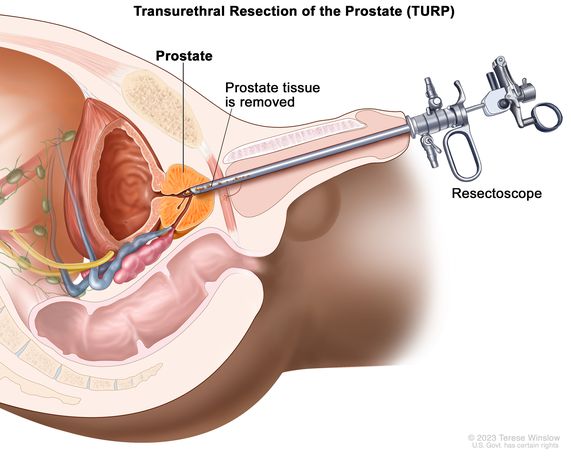🧬 TURP Surgery (Transurethral Resection of the Prostate)
TURP (Transurethral Resection of the Prostate) is a common surgical procedure used to treat Benign Prostatic Hyperplasia (BPH) — a non-cancerous enlargement of the prostate gland that often affects men over the age of 50. TURP is considered the gold standard treatment for moderate to severe BPH when medications are not effective.
🔍 Why is TURBT Performed?
TURBT is typically done to:
Remove tumors from the bladder lining.
Diagnose whether a tumor is cancerous (malignant) or non-cancerous (benign).
Determine the type, grade, and stage of bladder cancer.
Relieve symptoms like bleeding, frequent urination, or pain caused by the tumor.
🏥 How is TURBT Performed?
The surgery is done under general or spinal anesthesia.
A special instrument called a resectoscope is inserted through the urethra into the bladder.
The resectoscope has a small camera and a wire loop that uses electric current to cut away the tumor.
The removed tissue is sent to a lab for biopsy and analysis.
In some cases, a single dose of chemotherapy may be given into the bladder right after the procedure to reduce the risk of recurrence.
✅ Advantages of TURBT
Minimally invasive – no external cuts or stitches.
Quick recovery time.
Can often be done as a day-care or one-night stay procedure.
Helps in both diagnosis and initial treatment of bladder tumors.
🧪 After TURBT: What to Expect
A urinary catheter may be inserted temporarily to drain urine.
You may notice blood in the urine for a few days — this is normal.
Some burning or discomfort while urinating is expected.
Most patients can resume normal activities within a few days to a week, unless advised otherwise.
⚠️ Potential Risks or Complications
While TURBT is generally safe, possible risks include:
Bleeding during or after the surgery
Infection of the urinary tract
Bladder perforation (rare)
Temporary difficulty in urination
🔄 Follow-Up After TURBT
Bladder cancer has a tendency to return, so regular follow-ups are crucial:
A cystoscopy (bladder inspection with a scope) is usually scheduled every 3 to 6 months.
Additional treatments such as intravesical therapy (medication directly into the bladder) may be recommended based on pathology results.
🧠 Summary
TURBT is the first-line procedure for evaluating and treating bladder tumors. It's safe, effective, and plays a crucial role in diagnosing and managing early bladder cancer. Regular monitoring after surgery helps detect any recurrence early and improves outcomes.


Patient Feedback
Read what our satisfied patients say about Dr. Yasir Iqbal Lone.
Dr. Lone provided exceptional care during my surgery. Highly recommend his services!
John Smith
New Delhi
I am thoroughly impressed with Dr. Lone's expertise and caring nature. His staff is friendly, and I felt well taken care of throughout my treatment journey.
Emily Clark
Delhi NCR
